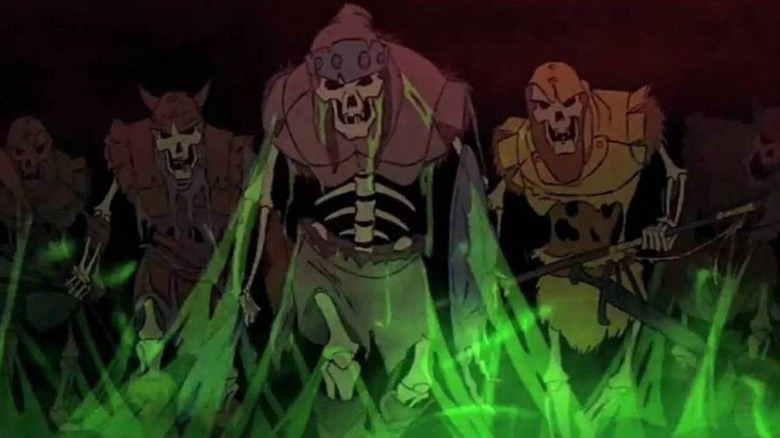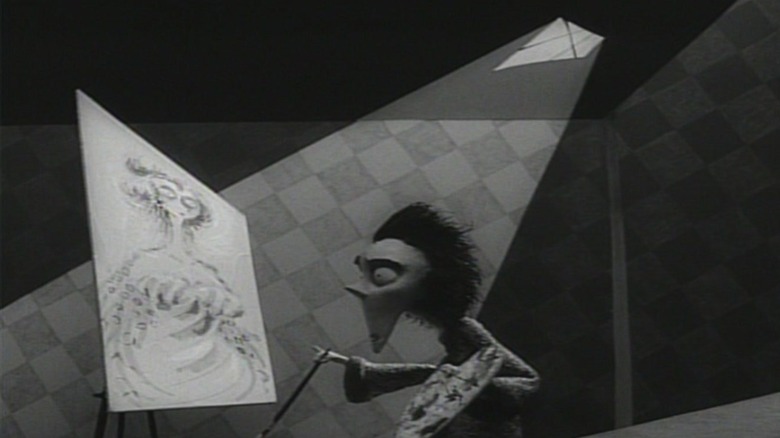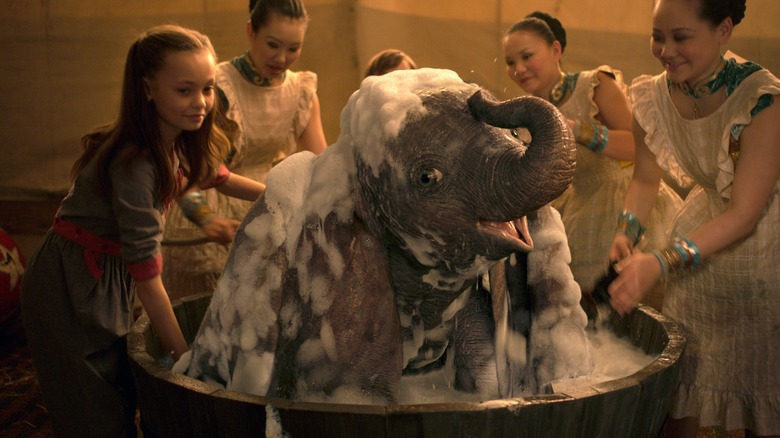Why Tim Burton Hated Working For Walt Disney Animation Studios
One of Tim Burton's first professional gigs after his stint at the California Institute of Arts was working as an animator, storyboard artist, and graphic designer at Disney. Burton was born and raised in Burbank, California, which is where Disney's offices are located, so he more or less grew up in the company's shadow. He worked at the Mouse House for a few years in the early '80s, working on films like "The Fox and the Hound," "TRON," and "The Black Cauldron." It should be noted that this was a notoriously bad time for Disney, and the financial failure of the ultra-ambitious and very expensive "Cauldron" (it cost $44 million) led to an open conversation about Disney shutting down its animation department.
Of course, while Disney was floundering financially, they were freer to experiment artistically. I maintain that Disney's most interesting movies came at a time when their kiddie-flick successes didn't define them. When Disney is rolling high, they're nothing more than a dominant paradigm to be subverted.
While Burton was working there, it was a boring job. Disney possesses a "house style" that is never, under any circumstances, to be deviated from. The directors of animated films are rarely given due credit for big-budget Disney animated films because the studio itself is the auteur. And if the studio is the inventor, actual artists have to merely serve the machine.
Burton, a quirky, strange man who would go on to make films like "Beetlejuice," "Edward Scissorhands," and "Mars Attacks!" was deadened by Disney's workaday drudgery. Back in 1989, when Burton was working on "Batman" for Warner Bros., he talked to the New York Times and described his time at Disney. It was a terrible gig.
From boredom to Vincent
About Disney, Burton said to the Times that, "You're strapped to a table all day and you have to draw. I just flipped out.” Luckily, Burton often drew his own pictures and even wrote a short film that Disney was kind enough to fund. That film was "Vincent," a stop-motion animated film about a lanky, strange child named Vincent Malloy who thinks he's Vincent Price. Price also narrated the film. It evoked a lot of Edgar Allan Poe. That was in 1982. ”It was great, a very nice thing to do," Burton said.
In 1983, Burton directed his first live-action short for Disney, rendering his own version of "Hansel and Gretel." It was made for the Disney channel, although the company clearly had little faith in the project; it aired only once, at 10:30 p.m. on Halloween night, and then was hidden in the Disney vault. Thanks to some spirited freelance archivists, the special is now available on YouTube if you search for it.
It seems there was no bad blood, or at least Disney was willing to offer Burton another opportunity, for in 1984, the young director made the live-action short "Frankenweenie." "Frankenweenie" was about a young boy named Victor Frankenstein who tragically loses his pet bull terrier to a car accident. Inspired by his science teacher, the boy uses electricity to bring his dog back to life. The dog will eventually be chased through the streets to a remote windmill, just like in "Frankenstein." This time, however, the windmill is part of a miniature golf course.
Shelley Duvall, Daniel Stern, Paul Bartel, and a young Sofia Coppola all appeared. The short was considered too grim for Disney, and Burton was notoriously fired.
Tim Burton's fraught relationship with Disney
"Frankenweenie" caught the eye of established Los Angeles performance artist Paul Ruebens, and he hired Burton to direct a film based on one of his comedic stage characters. "Pee-wee's Big Adventure," released by Warner Bros., hit theaters in 1985. Burton's film career was officially launched.
Burton has since had a touch-and-go relationship with Disney. His big hits in the late '80s and early '90s were distributed by Warner Bros. ("Batman" was a smash). The Disney-owned Touchstone distributed his 1994 biopic "Ed Wood," and in 2010, he went back to the company to make his version of "Alice in Wonderland." Although it's one of Burton's less interesting movies, it was such an enormous success it kicked off a sad decade-long trend of live-action remakes of Disney animated films.
Burton would also helm one of those remakes, with the live-action take on 1941's "Dumbo," only he would add a weird anti-Disney twist. The villain of the film is a Walt Disney-like entertainment mogul named V.A. Vandervere (Michael Keaton). Vandervere has a habit of buying legitimately exciting entertainment and feeding them into the soulless Disneyland-like theme park he calls Dream Land. Dumbo is purchased by Vandervere and forced to perform.
By the end of the film, Dumbo breaks free from Vandervere's servitude and flies around Dream Land while Vandervere tries to shoot him down with a lightning gun in the middle of the theme park. It's likely no coincidence that the lightning gun looks like the Death Star from "Star Wars." It's a climax that sees a classic Disney character forcing Walt Disney himself to burn down Disneyland using "Star Wars," a property Disney acquired a few years earlier.
Burton, it seems, was happy to burn bridges. In this case, literally.


